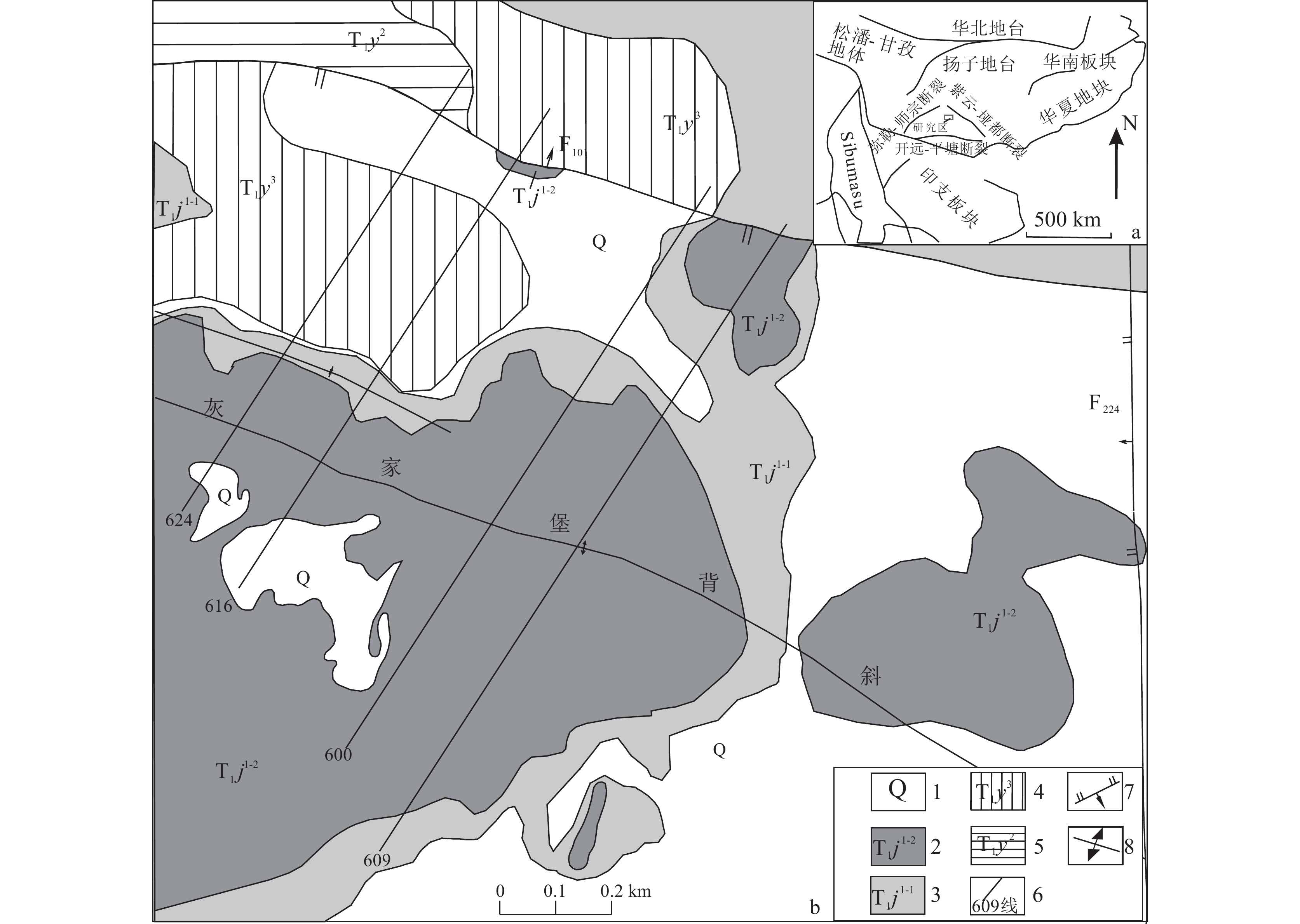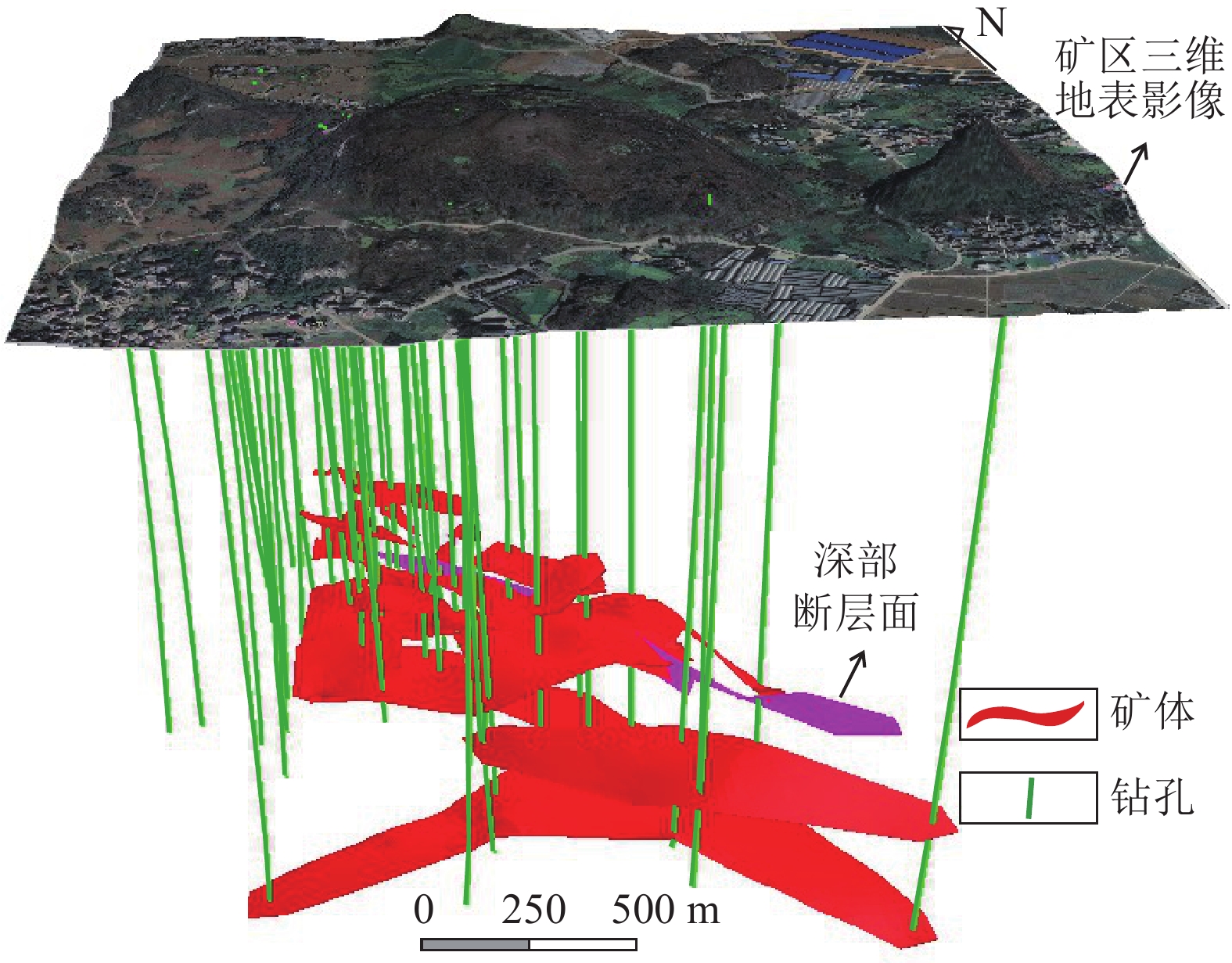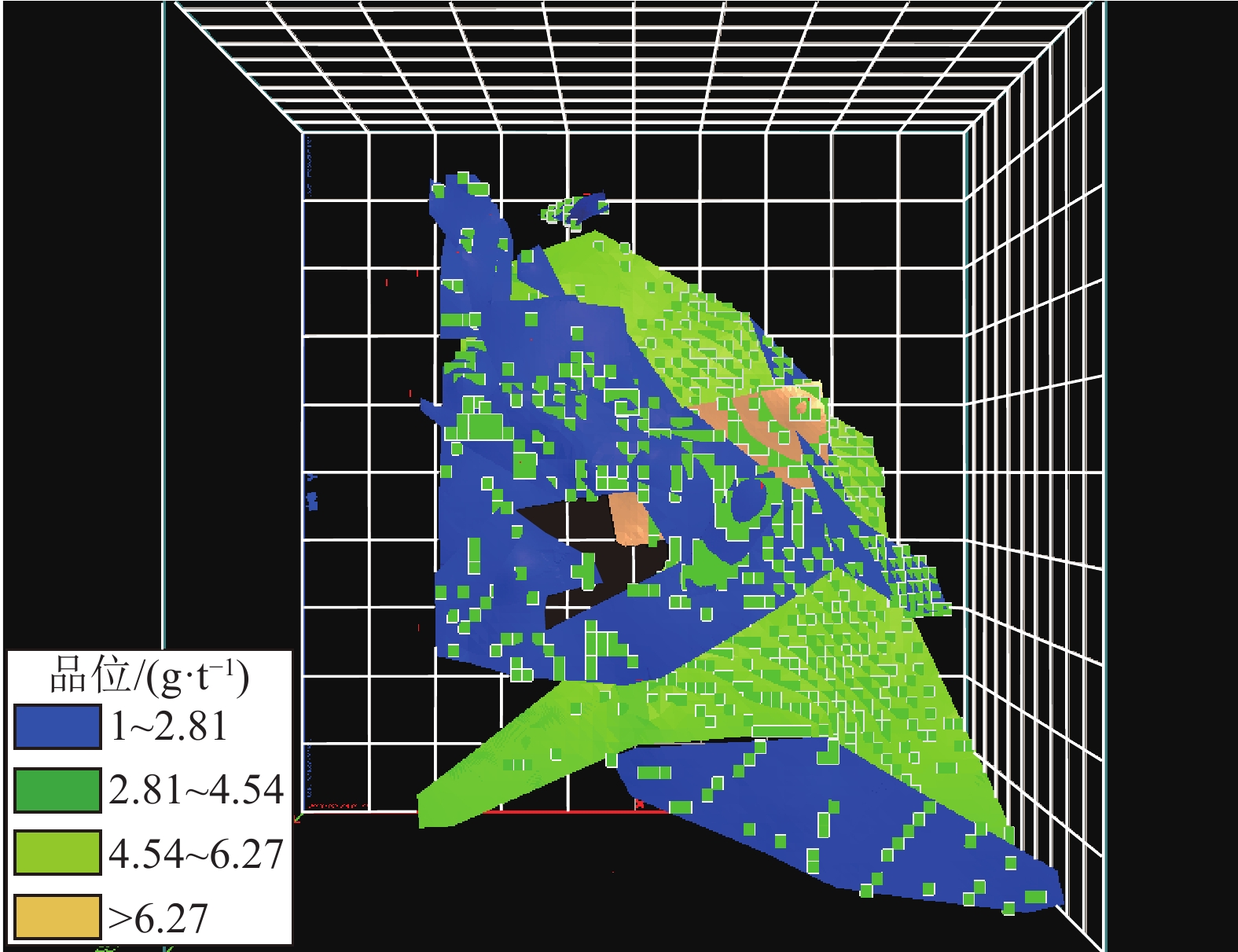Application of the QuantyPES mineral resources estimation in the Zhexiang gold deposit, Southwest Guizhou: A comparative study relative to the estimation of traditional software
-
摘要:
传统制图软件MapGIS、CAD等在资源量估算中具有一定的局限性,其复杂的人工估算和繁重的数据管理过程,导致资源量估算效率较低,而利用QuantyPES软件进行资源量估算可以较好地弥补这些不足。该软件可以把繁杂的传统资源量估算方式转变为系统的软件程序自动化,适用于矿产勘查各阶段的资源量估算与管理。以黔西南者相金矿床为例,介绍与对比QuantyPES软件与传统软件在实际资源量估算方式中的特点,认为QuantyPES软件在资源量估算中具有更快的速度及效率,计算结果具有更高的准确性及科学性,还可进行三维地质统计学法资源量估算、资源储量动态估算与管理、数据可持续利用及共享等。通过研究QuantyPES软件在资源量估算中的先进性,期望该软件在未来地质勘查工作中得到更广泛的应用,进一步提高资源量估算的科学性与可靠性。
Abstract:Mineral resources estimation of traditional MapGIS and CAD is common in low efficiency because of the complicated manual operation and exhausted data processing. However, QuantyPES provides an integrated function in resources estimation, which has been proposed the complicated traditional resource estimation method into the system software program automation. With a case study of the mineral resource estimation in the Zhexiang gold deposit of Southwest Guizhou to compare the calculation of mineral resources used by the QuantyPES and traditional software, respectively. The application of QuantyPES shows a better performance in efficiency based on the rapid response and accurate result, which further provides the 3D geostatistical resource estimation, dynamic estimation and management of reserves, and data reusage and sharing, etc. With introducing the advanced of QuantyPES software in resource estimation, hoping that this software will be more widely used in future geological exploration, and further improve the scientific and reliability of resource estimation.
-

-
表 1 传统软件(MapGIS)地质块段法与地质统计学法资源量估算结果对比
Table 1. Comparison of resource estimation results between traditional software (MapGIS) geological block method and geological statistics method
矿体 传统软件地质块段法 地质统计学法 资源量对比 平均品位误差/(g·t−1) 资源量/kg 平均品位/(g·t−1) 资源量/kg 平均品位/(g·t−1) 误差/kg 误差率 相似率 Ⅲb-1 1380 3.31 1447 2.88 68 4.9% 95.1% 0.43 Ⅲb+1-1 986 3.63 988 3.48 3 0.3% 99.7% 0.15 Ⅲc-1 4883 5.28 4885 5.55 2 0.0% 100.0% −0.27 Ⅲc+1-1 489 4.01 442 3.60 −47 −9.6% 90.4% 0.41 Ⅲe-1 928 5.57 906 5.91 −22 −2.3% 97.7% −0.34 Ⅳa-1 321 2.70 359 3.36 38 11.8% 88.2% −0.66 Ⅳb-1 83 2.52 83 2.40 0 −0.1% 99.9% 0.12 Ⅳb-2 122 3.58 119 3.43 −4 −3.1% 96.9% 0.15 Ⅳb-3 865 3.05 759 5.06 −107 −12.3% 87.7% −2.01 Ⅳc-1 640 2.93 576 2.57 −64 −10.0% 90.0% 0.36 F20-1 926 3.27 928 3.26 2 0.2% 99.8% 0.01 汇总 11623 4.04 11492 4.14 −131 −1.1% 98.9% −0.09 表 2 QuantyPES软件地质块段法与地质统计学法资源量估算结果对比
Table 2. Comparison of resource estimation results of QuantyPES software geological block method and geological statistics method
矿体 QuantyPES软件地质块段法 地质统计学法 资源量对比 平均品位误差/(g·t−1) 资源量/kg 平均品位/(g·t−1) 资源量/kg 平均品位/(g·t−1) 误差/kg 误差率 相似率 Ⅲb-1 1344 3.31 1447 2.88 104 7.7% 92.3% 0.43 Ⅲb+1-1 1007 3.59 988 3.48 −19 −1.9% 98.1% 0.11 Ⅲc-1 4945 5.42 4885 5.55 −60 −1.2% 98.8% −0.13 Ⅲc+1-1 497 4.01 442 3.60 −55 −11.0% 89.0% 0.41 Ⅲe-1 921 5.57 906 5.91 −15 −1.6% 98.4% −0.34 Ⅳa-1 312 2.70 359 3.36 47 15.2% 84.8% −0.66 Ⅳb-1 87 2.52 83 2.40 −4 −5.1% 94.9% 0.12 Ⅳb-2 127 3.59 119 3.43 −9 −6.9% 93.1% 0.16 Ⅳb-3 850 2.98 759 5.06 −92 −10.8% 89.2% −2.08 Ⅳc-1 665 2.87 576 2.57 −89 −13.4% 86.6% 0.30 F20-1 903 3.26 928 3.26 26 2.8% 97.2% 0.00 汇总 11659 4.06 11492 4.14 −166 −1.4% 98.6% −0.07 -
[1] 郭慧锦. 2010. 块段法与地质统计相结合的矿产储量计算方法研究[D]. 中国地质大学(北京)硕士学位论文.
[2] 李晓晖, 袁峰, 张明明, 等. 2015. 基于Surpac的垂直断面资源储量估算方法研究与实现[J]. 吉林大学学报(地球科学版), 45(1): 156−165.
[3] 李章林, 张夏林. 2007. 距离平方反比法矿产资源储量计算模块设计与实现[J]. 地质与勘探, (6): 92−97.
[4] 梁红姣. 2018. 我国矿产资源储量估算方法初探[D]. 中国地质大学(北京) 硕士学位论文.
[5] 潘谋成, 胡凯, 曹剑, 等. 2013. 黔西南簸箕田卡林型金矿中含砷黄铁矿和毒砂的赋金特征研究[J]. 高校地质学报, 19(2): 293−306. doi: 10.3969/j.issn.1006-7493.2013.02.012
[6] 曲鑫, 王盛.2010. 传统地质块段法和地质统计品位估值相结合的储量计算方法介绍[J]. 硅谷, (8): 3.
[7] 邰文星, 周琦, 杨成富, 等. 2023. 黔西南者相金矿床三维地质可视化建模及应用[J]. 地球科学, 48(11): 4017−4033.
[8] 陶平, 陈启飞, 祁连素. 2019. 黔西南金矿区域成矿规律及成矿模式[J]. 贵州地质, 36(2): 110−119.
[9] 王炯辉, 李毅, 黄冬梅, 等. 2013. 基于普通克里格法的泥河铁矿床资源储量估算研究[J]. 地质与勘探, 49(6): 1108−1113.
[10] 王小宁. 2016. 吉林市磐石五个顶子地区晚古生代石灰岩矿床地质特征与资源储量估算[D]. 吉林大学硕士学位论文.
[11] 王云, 王勇, 王文博, 等. 2019. SD法在河南千鹅冲钼矿床资源储量估算中的应用[J]. 地质科技情报, 38(1): 113−120.
[12] 张明明, 周涛发, 袁峰, 等. 2011. 长江中下游地区玢岩型铁矿床资源储量估算研究[J]. 地质学报, 85(7): 1215−1222.
[13] 张夏林, 陈国旭, 綦广, 等. 2011. 传统资源储量估算在QuantyMine数字矿山软件中的实现及关键技术[J]. 吉林大学学报(地球科学版), 41(S1): 406−413.
[14] 张夏林, 汪新庆, 吴冲龙. 2001. 计算机辅助地质填图属性数据采集子系统的动态数据模型[J]. 地球科学, (2): 201−204. doi: 10.3321/j.issn:1000-2383.2001.02.019
[15] 张夏林, 吴冲龙, 翁正平, 等. 2010. 数字矿山软件(QuantyMine)若干关键技术的研发和应用[J]. 地球科学(中国地质大学学报), 35(2): 302−310.
[16] 张夏林, 吴冲龙, 周琦, 等. 2020. 基于勘查大数据和数据集市的锰矿床三维地质建模[J]. 地质科技通报, 39(4): 12−20.
[17] 张夏林, 吴冲龙, 周琦, 等. 2020. 贵州超大型锰矿集区的多尺度三维地质建模[J]. 地球科学, 45(2): 634−644.
[18] 张瑜, 夏勇, 王泽鹏, 等. 2010. 贵州簸箕田金矿单矿物稀土元素和同位素地球化学特征[J]. 地学前缘, 17(2): 385−395.
[19] 赵增玉, 潘懋, 田甜, 等. 2010. 固体矿产资源储量估算系统中垂直断面法的实现[J]. 地质与勘探, 46(3): 547−552.
-




 下载:
下载:








